Throughout the ages, Alocasia foliage has been celebrated as one of the most fascinating and mesmerizing arts of nature. Since then, the beauty of these aroids has graced homes and public spaces, enhancing the beauty of any landscapes they are in. In this article, let’s talk about Alocasia nebula.
With the vast array of choices of Alocasia available in the market, one might ask who’s the most beautiful of them all? Lucky for you because you don’t need a mirror to ask that question. Alocasia nebula is the most beautiful and sought-after jewel alocasia of them all.
RELATED: The 28 Most Gorgeous Alocasia Types You Can Grow In Your Homes
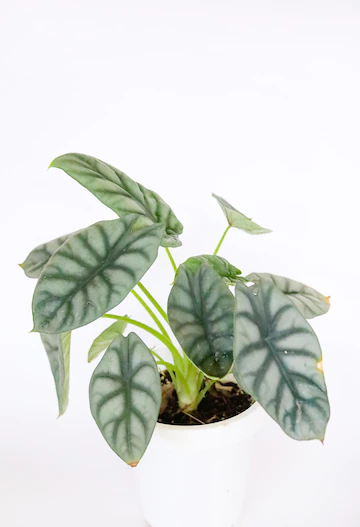
Alocasia Nebula Profile
General Information
Known first for a long time as “the cultivated Alocasia”, it was not until 1998 when Alistair Hay revisited the true identity of this beautiful jewel Alocasia as mentioned by David Brunette in an Australian monograph. It has since then lived a doomed life.
The plant’s common names include “silver plant”, “elephant ear plant”, and Silver Nebula. Varieties of this plant include Alocasia Nebula Imperialis, Balun, and Elaine.
The rare jewel alocasia has grown commercial interest due to its mature green leaves that produce a silvery-grey hue in contrast to its dark grey venation pattern. This mature colouration and intricate texture make the plant exotic and premium. Because of these characteristics, Nebula makes a good terrestrial plant for decorative purposes.
Etymology
The formal name “Alocasia nebula” was given in the year 2000. The plant was considered as only a variety of Alocasia guttata before it got revisited. Its first official name was Alocasia guttata var. Imperialis.
Flowering
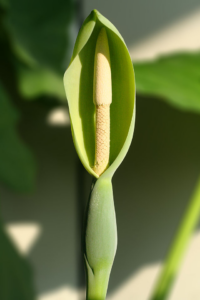
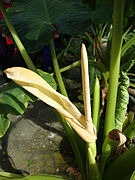
Photo Credit (left) Photo Credit (right)
Nebula, just like any other Alocasia plant, produces an inflorescence similar to Anthuriums. The inflorescence is called a spadix, consisting of white, unscented insignificant flowers, and a leaf-like spathe.
Season of Interest and Purchasing
Alocasia plant is a prolific grower during spring and summer and thus is abundant during these seasons. Alocasias are available to purchase all-year round.
Growth
Nebula alocasia plants can grow pretty quickly, especially during the growing season when new growth is expected every week or so with proper care. Therefore, a new leaf grows more significantly during these months than the last leaf.
A mature plant Nebula can grow up to 3 feet in height. Its mature leaves can grow up to 17 inches in size.
Alocasia nebula Overview
| Scientific name | Alocasia nebula |
| Common name/s | Silver Nebula, Nebula, Elephant ears |
| Family | Araceae |
| Growth Habit | Herbaceous |
| Height and Spread | 3 ft. in height, mature leaves up to 17 inches. |
| Classification based on life cycle | Perennial |
| Origin and Distribution | Obscure origin. Native range in Borneo. Commercially available around the world. |
| Climate Zone | Generally warmer climate |
| USDA Plant Hardiness Zone | USDA Zone 9 – 11 |
| Color | Green with silvery hue and dark gray veins |
RELATED: Alocasia Sarian: Ultimate Care Guide, Propagation, and More
Care Tips
Light Requirement
Alocasia Nebula plants require bright indirect light, may it be artificial light or natural. However, direct sunlight is never good for all Alocasias as it causes burns to their delicate leaves. Therefore, a partial shade is also recommended, especially during summer.

Temperature Requirement
Nebula alocasias love warmer conditions. The optimum temperature range for these plants is between 18 to 25 °C.
Alocasias are not known to be hardy in winters. They are not cold temperature tolerant. They go dormant and drop their leaves when the temperature falls below 17 °C. However, they are equally dramatic in changing temperatures.
Water Requirement
Your Alocasia nebula loves partially moist soil. A partially moist soil means it is halfway between being wet and dry. You can achieve that by watering often, but not with too much water as it will cause root rot. A spray bottle can help in attaining this condition. The soil must be moist and never soggy.
Water requirements change with the season. Water the Nebula plant three times a week during summer and the growing season. Decrease this to twice a week during the winter season. Tap water is not advisable to water this fussy plant.
Humidity Requirement
Nebula requires high humidity. The usual 50% general humidity allowance for Alocasias does not do well with this plant. Even humidity trays will still make crispy edges to the leaves. A minimum of 65% or more is needed for this type of Alocasia. The best way to do this is to enclose this plant in a terrarium or place a humidifier nearby.
Soil Requirement
A suitable soil condition for this alocasia plant is well-draining and organic that has good aeration. A good fraction of peat moss and perlite can be added to the soil mix to improve drainage and air circulation in the soil. Acidic soil is preferred.
Fertilizer Requirement
Fertilizing Alocasia plants need extreme caution since they are easily burnt with too much fertilizer and will also wilt without nutrition. Therefore, a quarter strength of liquid fertilizer is recommended to be used for Nebula. Pour the fertilizer after watering.
In the growing season, fertilization can be done every two weeks. However, during the dormancy period, once a month feeding is advised.
Space Requirement
Alocasia nebula does not need ample space to thrive. They love getting pot-bound roots, so there is only a minimum space requirement for this plant.
RELATED: Alocasia Maharani: Helpful Plant Information and Care Guide For This Rare Beauty
Growing and Planting Tips
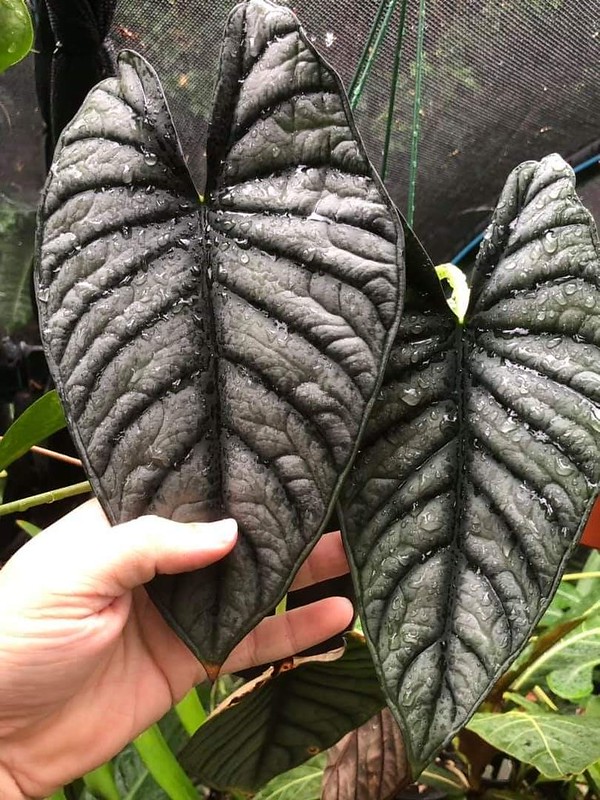
Propagation
Alocasia nebula, just like other Alocasias, is propagated using rhizome division. The best time to propagate this plant is during spring and summer.
To propagate using rhizome division, take out the mother plant first by losing the soil around it. Then, using a sharp tool, cut a third of the rhizome. Place the baby rhizome in a proper growing medium. A moist substrate is recommended to be used. Plant the mother plant back. Place the plants in a conducive environment where no direct light can reach the growing plants.
Since it is a relatively fast-growing Alocasia, new plants will be propagated for 30 days.
Pruning
It is essential to remove unhealthy leaves, those showing yellow or brown colouration, as soon as possible to mitigate fungi diseases and harmful leaf growth. New leaves will grow faster when the plant is regularly pruned.
Potting and Repotting
Nebula plants thrive in small pots as long as they have efficient drainage holes. They like their root system to be pot-bound.
Re-pot only the plant when roots are already coming out of the potholes or when the roots are already congested. If it is newly bought, it is best to have it acclimatized first for a week or two to avoid transplant shock.
Alocasia Nebula Care
| Light | Bright indirect |
| Temperature | 18-25 degrees Celsius |
| Water | Once a week, increased in summer, decreased in winter |
| Soil | Well-draining and organic |
| Fertilization | Once a month |
| Space | Minimal space |
| Propagation | Via rhizome division |
| Blooming | Rarely blooms, enough sunlight and maturity needed |
| Pruning | When needed, removal of damaged and decaying leaves |
| Potting | Regular potting mix, use of perlite and peat moss recommended |
Problems and Troubleshooting
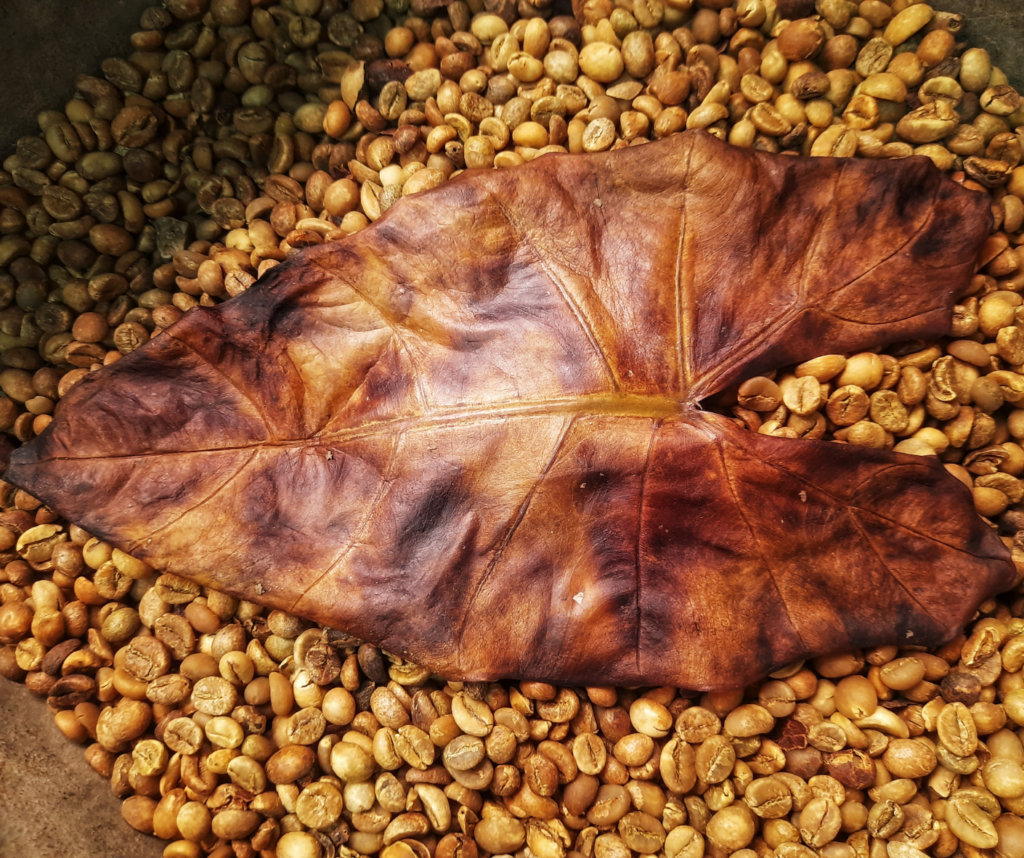
Photo Credit: Canva Pro
Overwatering
Overwatering causes the thick leaves of Alocasias to droop. Root rotting, brown spots, leaf yellowing, and edema on leaf surfaces are symptoms of overwatering.
To avoid this problem, ensure that proper watering is given to the plant. In addition, suitable environmental conditions such as good well-draining soil medium, lighting, and humidity must also be provided.
Underwatering
Crispy leaf tips and edges on brown leaves are signs of underwatered alocasias. Cracky plant soil is also observed when watering is insufficient.

To fix this, check your watering schedule. During the growing season, make sure to water them twice a week. A root-bound plant is also a factor in underwatering. Make sure to transfer it to a bigger pot when necessary.
Nutrient Deficiency
Purplish hue, grey colouration, yellowing of leaves, and burnt tips and edges are common problems encountered with a nutrient deficiency in plants. Moreover, leaf holes with brown spottings, softening of texture, stunted leaf formation and root system are common symptoms. Therefore, any of these flawed characters should be mitigated apprehensively.
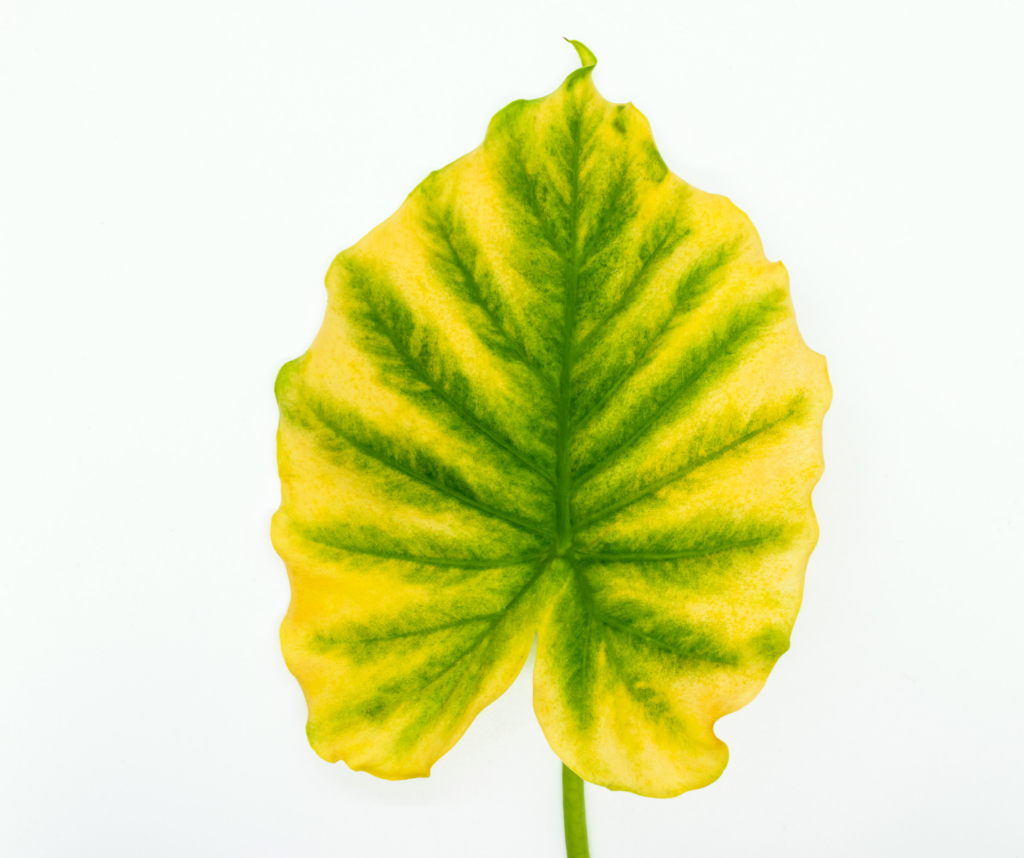
Photo Credit: Canva Pro
The right and balanced fertilizer should be used to feed Alocasia Nebula to mitigate this problem. However, the nutrient strength must be proper as too concentrated mixture will damage the plant. Moreover, soil’s acidity should also be within range to enhance the uptake of nutrients.
Flowering Problems
Jewel alocasias rarely flower and do not have a reliable flowering season. To ensure that the Nebula plant will flower, sufficient light and competency of the plant are needed. These are the minimum requirements of most plants to flower.
Pests and Diseases
Alocasia nebula Pests and Diseases
| Common Pests/Diseases | Symptoms | Treatment and Prevention |
Common diseases include leaf spotting, root rotting, fungal diseases, stem and crown rotting. | Black or dark brown spots with yellow rim around | Do not overwater and maintain proper humidity levels. Extremely wet environments enhance fungal growth.Proper ventilation is necessary. Removal of infected plant parts to avoid spreading of disease. |
| Common pests include aphids, scales, mealybugs, spider mites | Visible insects thriving on surface | Warm, soapy water can be sprayed once a month. Neem oil, herbal spray, or commercial insecticides can also be used. |
Problems with People and Animals
Toxicity
Furthermore, Calcium oxalate crystals are present in all Arum family members, including Alocasia plants. These crystals make the Nebula Alocasia highly toxic to both pets and humans. When ingested, swelling and irritation to the throat and mouth can occur. In fact, in extreme cases, these crystals can even induce death.
Alocasia Plants Meaning and Symbolism
Even though Alocasias are herbaceous plants and not trees, the “tree that grows up to the heavens” in Jack and The Beanstalk fairy tale is attributed to these plants. Both the Western and Eastern versions of the classic tale referenced Alocasia.
With this reference, seizing opportunities and risk-taking is what Alocasias generally symbolize. At last, Alocasias are the best gifts to those who will venture to a new horizon in their lives.
Alocasia Sarian Symbolism and Meaning
| General Meaning | “plant that grows up to heavens” |
| Symbolism | Risk taking and seizing opportunities |
| Cultural Significance | Attribution to the Jack and the Beanstalk fairytale |
Landscaping and Gardening Ideas
Companion Plants
Thus, one can achieve a lush, tropical scenery by adding other plants with elephant ears or heart-shaped leaves to spaces. Therefore, Alocasia nebula can be with an exciting array of Xanthosomas, Caladiums Colocasia, and other Alocasia plants like Sarian and Maharani.
For a more equatorial vibe, ornamental bananas, ficus, dieffenbachias, scheffleras, canna lilies, and coleus can also be with Nebula plant.
Landscaping Ideas
Alocasias are good centerpieces for any corner and space because of their foliage’s shape and intricate detail and texture. Hence, Nebula alocasia is not an exception. Thus, it can be in the gardens and commercial landscapes to enhance the scenery.

| What to plant with | Colocasia, Caladiums, Alocasias, Xanthosomas, Coleus, Canna Lilies, Ornamental Bananas, Ficus, Dieffenbachia, Schefflera |
| What NOT to plant with | Basically nothing |
Conclusion
Even though the Alocasia nebula plant is not for beginners, its immense beauty is unparalleled. In fact, the greyish, thick, and radiating patterning of the leaves are the winning characteristic of this rare jewel alocasia. Nebula alocasias are still one of the most beautiful alocasias that will surely enhance and beautify any landscape. Of course, the care needed is more intense, but pretty sure, for this plant, it will all be worth it.
FAQs
1. How do you propagate Alocasia nebula?
Like any other Alocasias, you can propagate Nebula through rhizome division. Using a knife, cut a piece of underground rhizome and then plant it in a proper growing medium.
2. What soil does an Alocasia nebula need?
Alocasias in general need a well-draining, moist soil. For this fussy plant, an organic soil is recommended.
3. Is Alocasia nebula easy to care for?
Sadly, Nebula is not for beginners and needs intense care knowledge for it to be properly taken care of. It is a fussy and dramatic Alocasia.
4. Is Alocasia nebula rare?
Yes, this jewel alocasia is also rare like Maharani.
5. Can you propagate Alocasia nebula using a leaf?
For this particular Alocasia, it is more recommended to propagate this using rhizome division to ensure success.
Discover more plants like Alocasia Nebula, check out our other articles:
Types of Crassula Jade Plants – Bring Happiness and Prosperity to Your Home
How To Grow & Care For Your Monstera Plant? The Ultimate Guide







